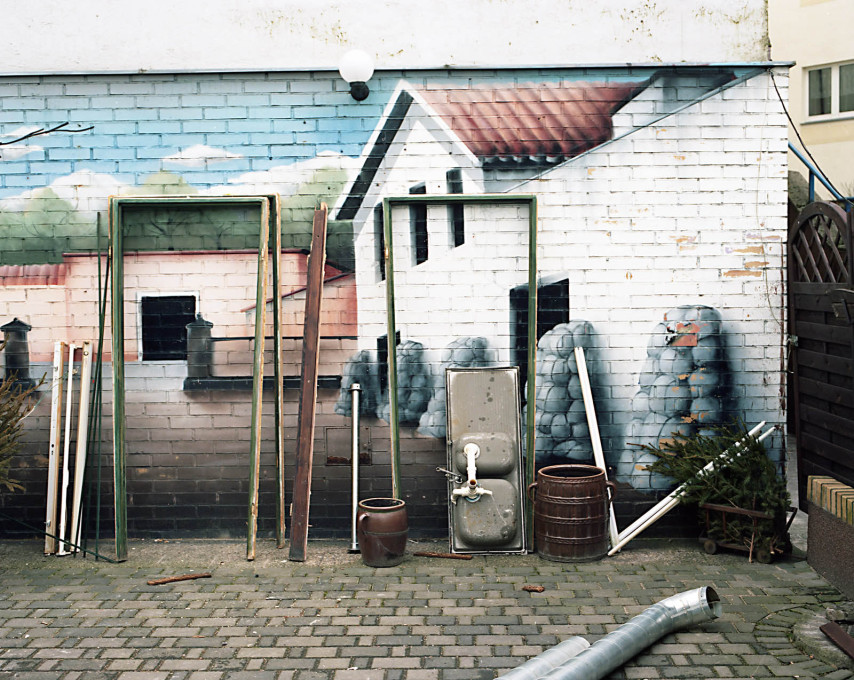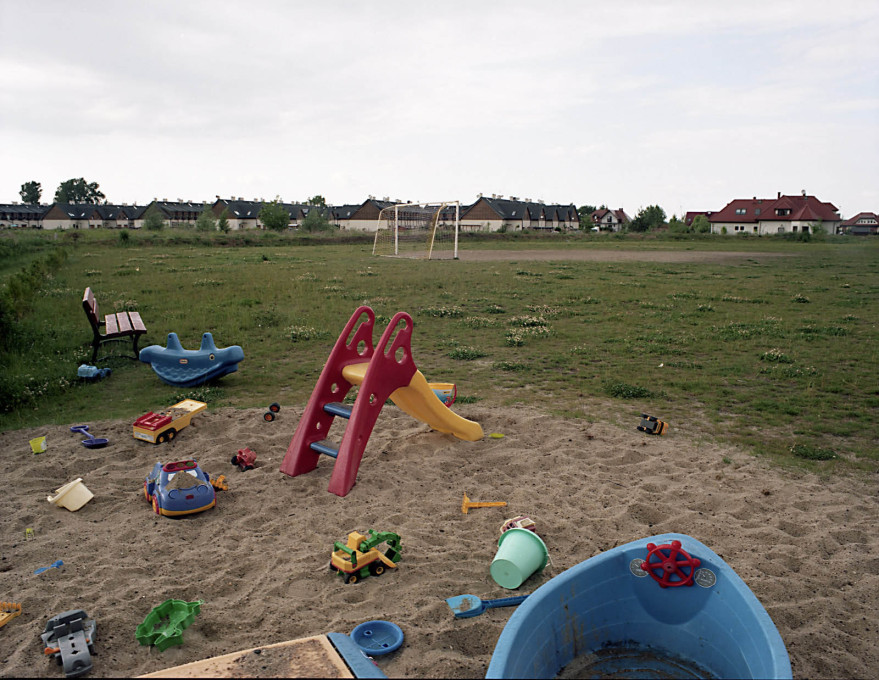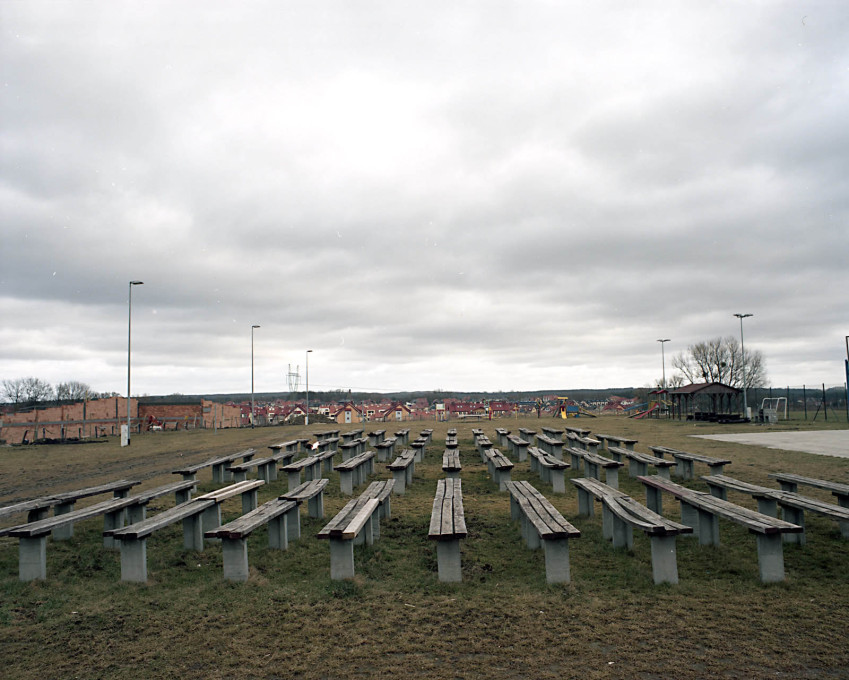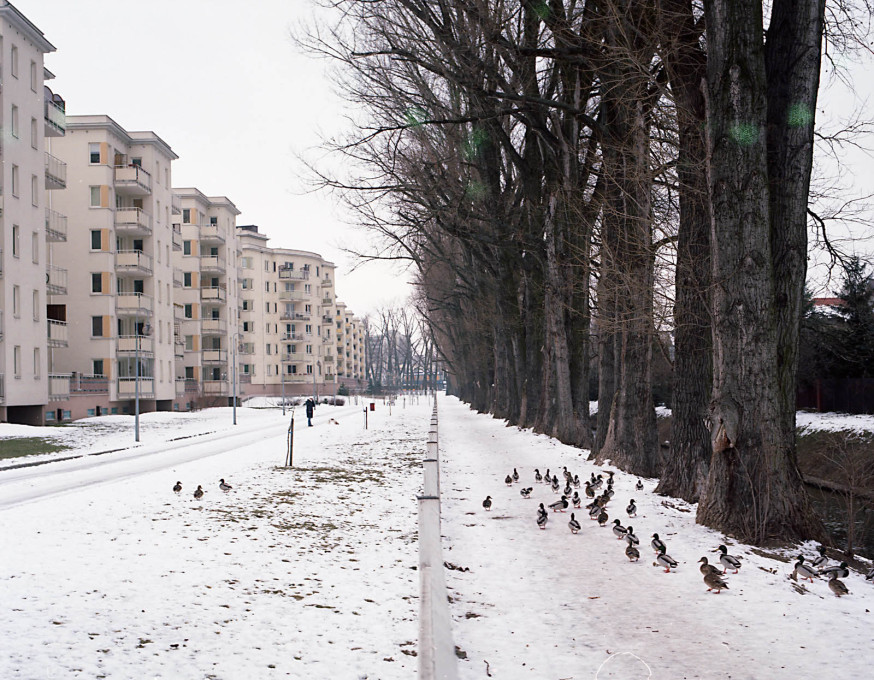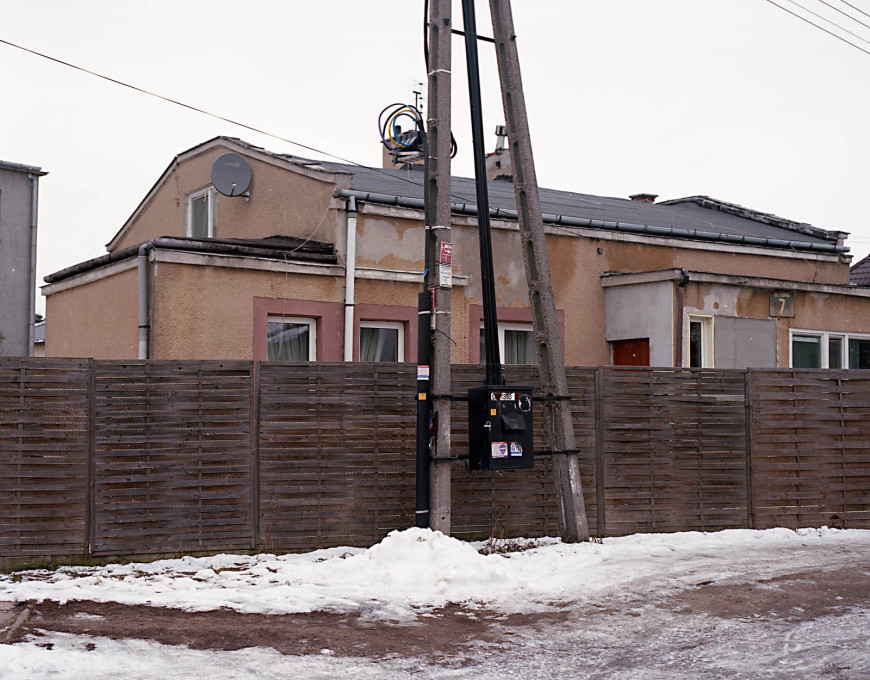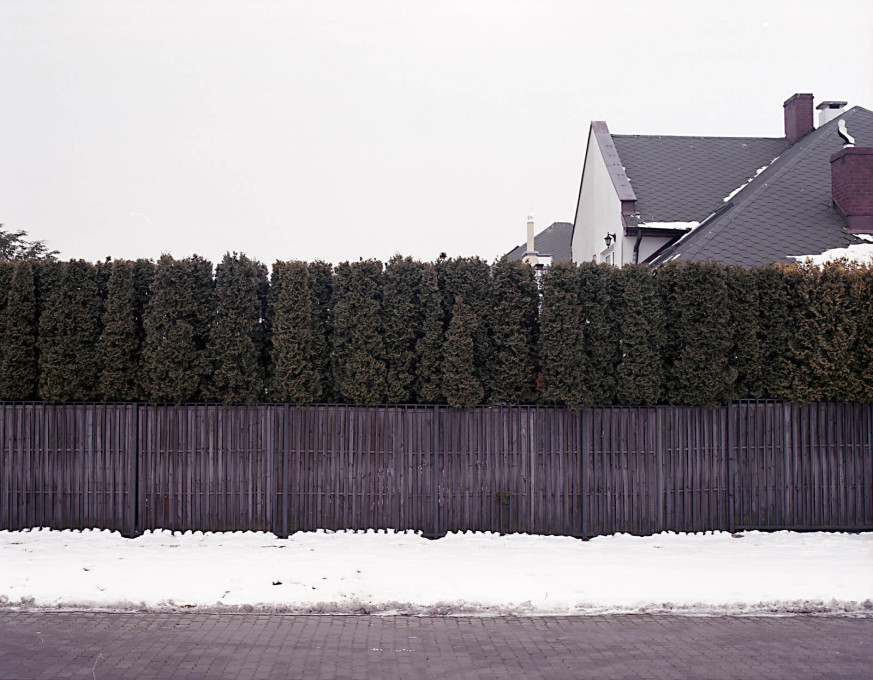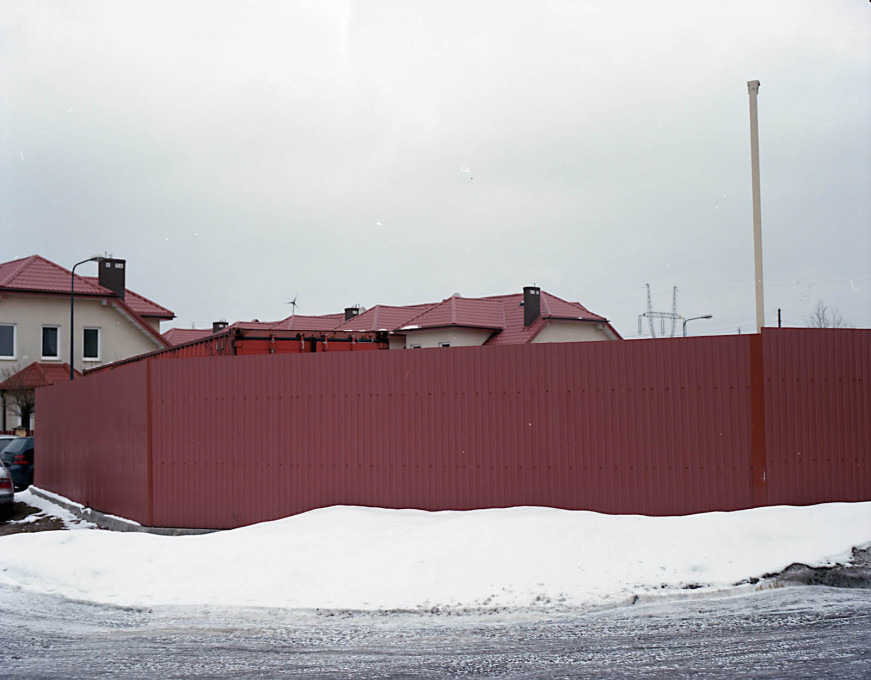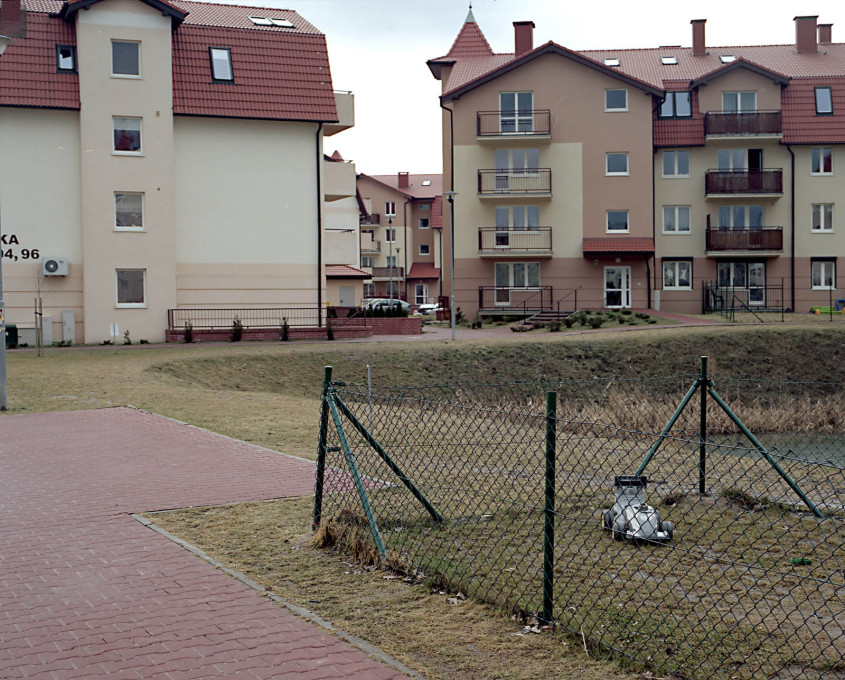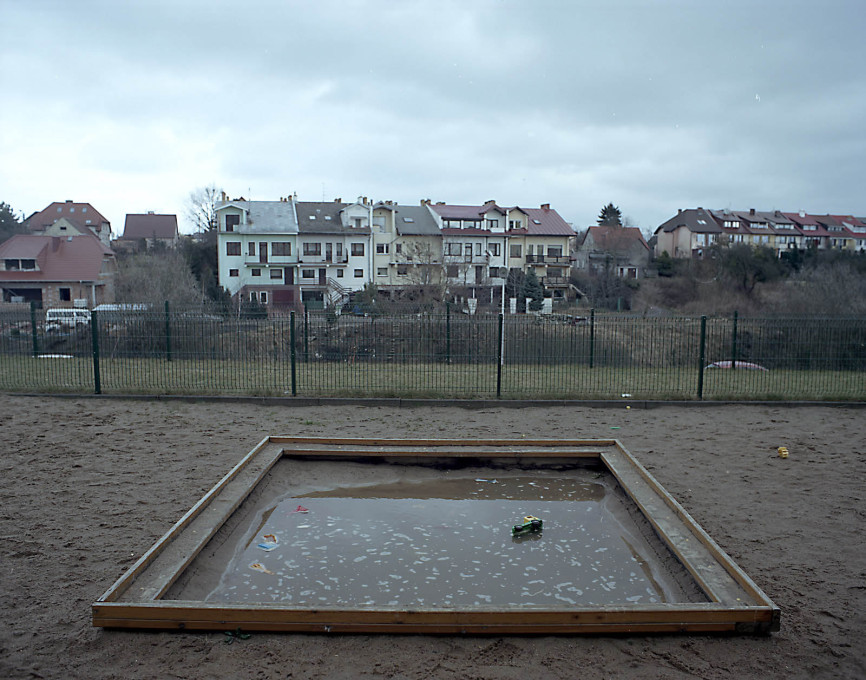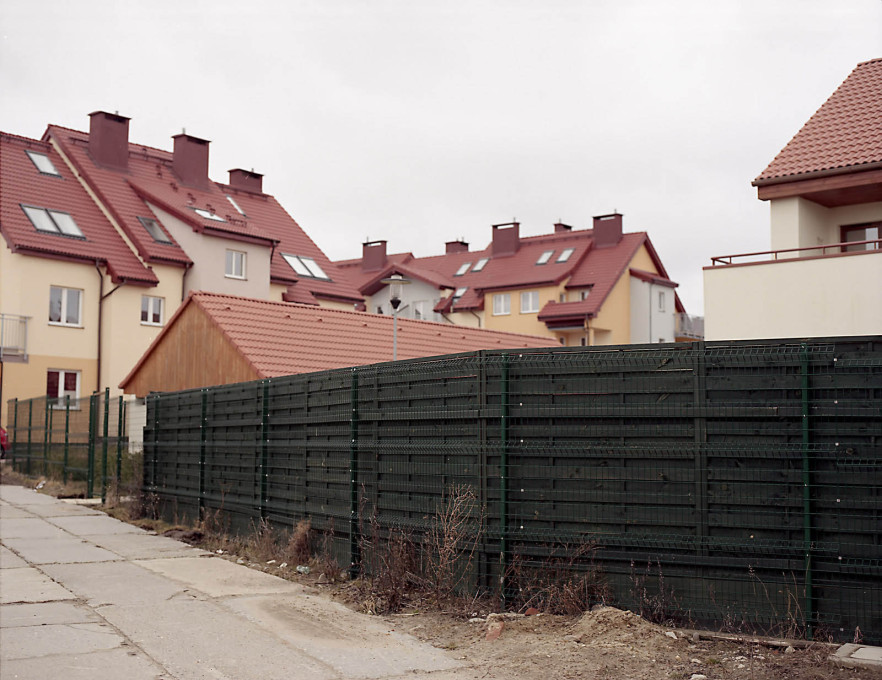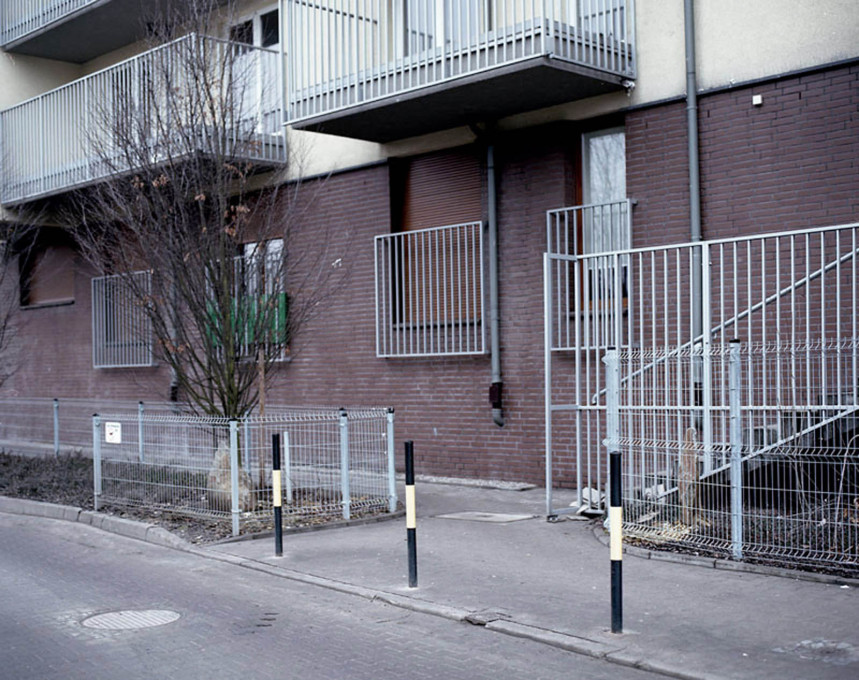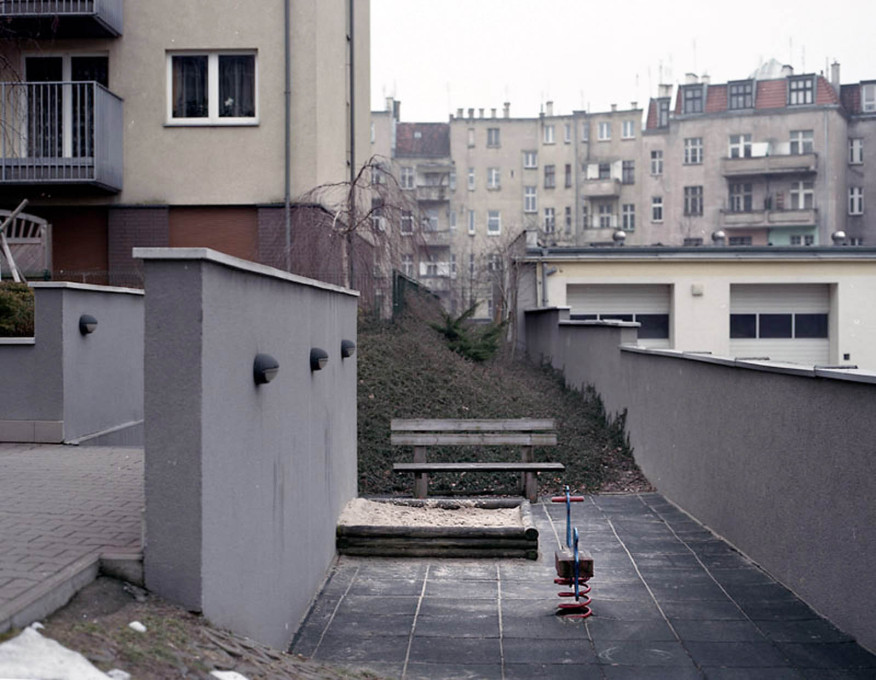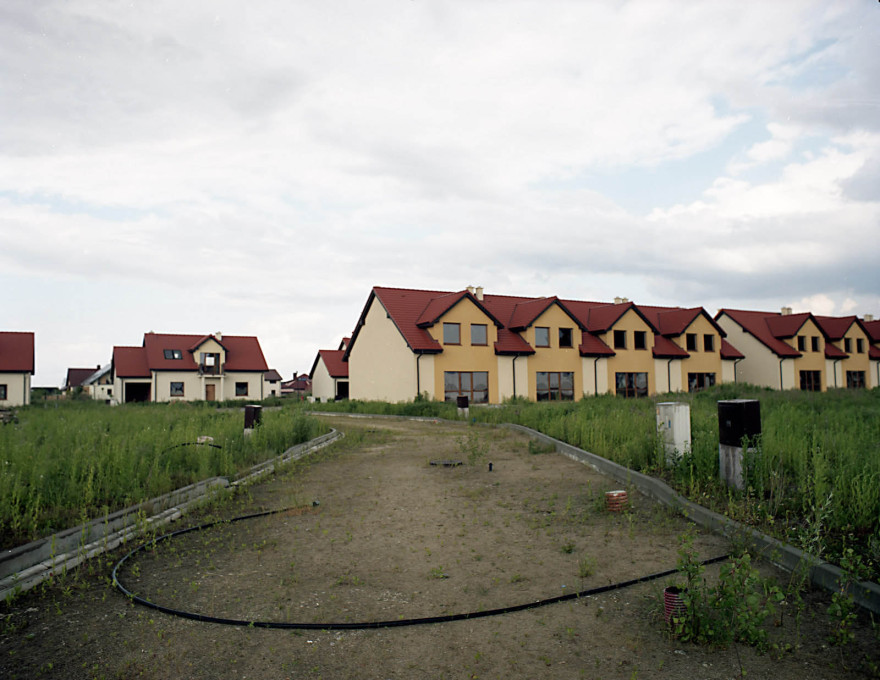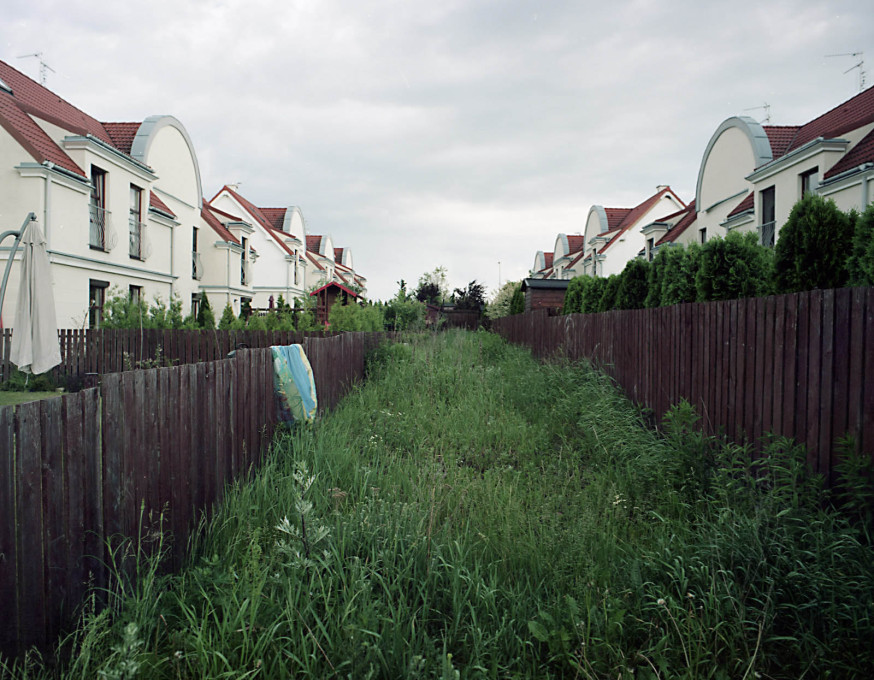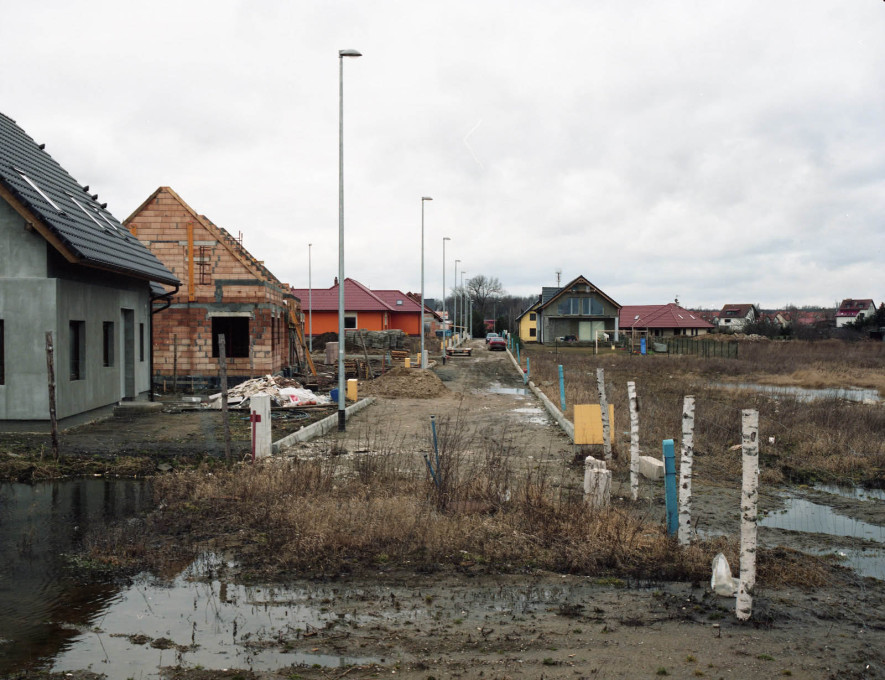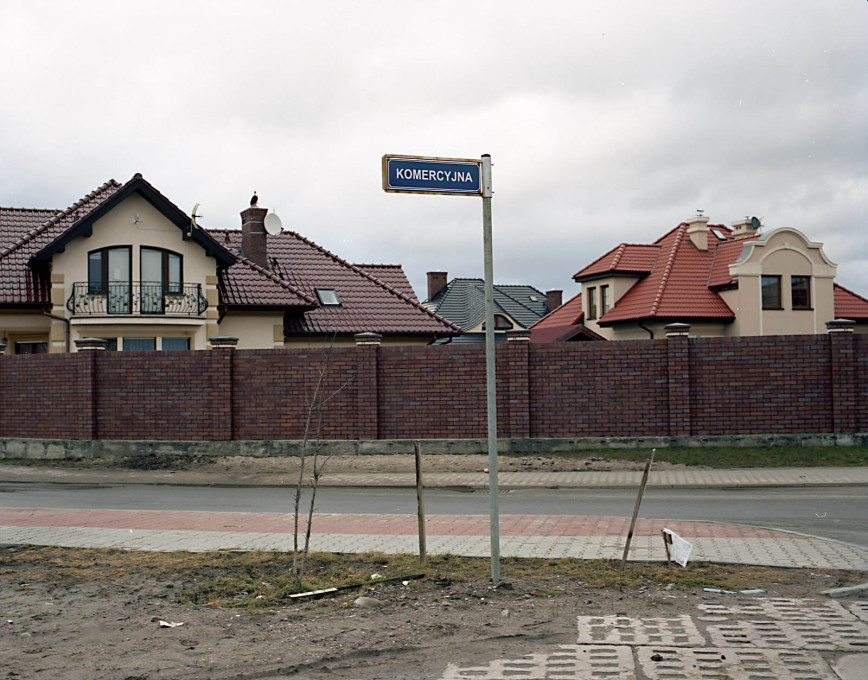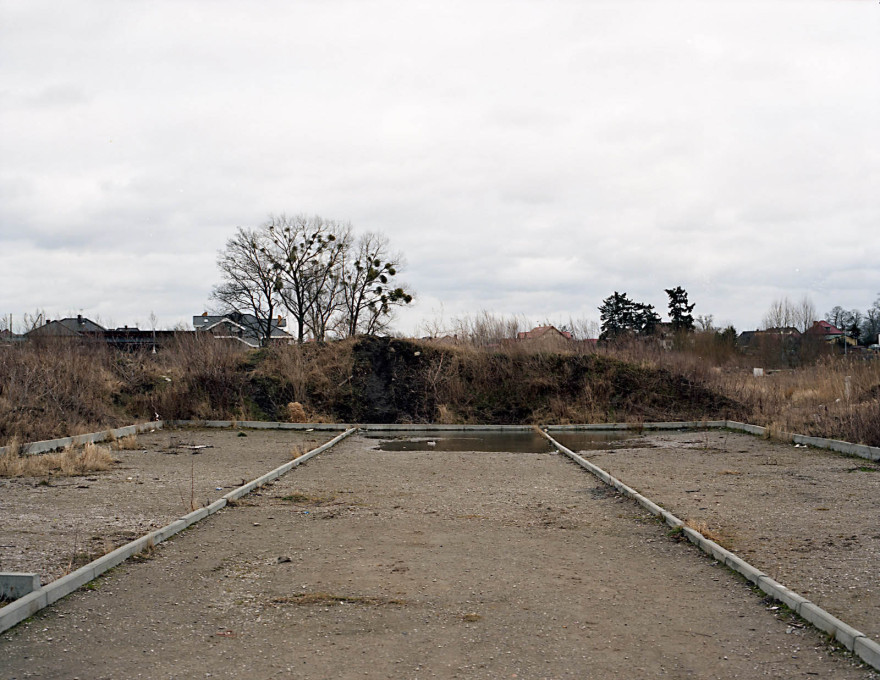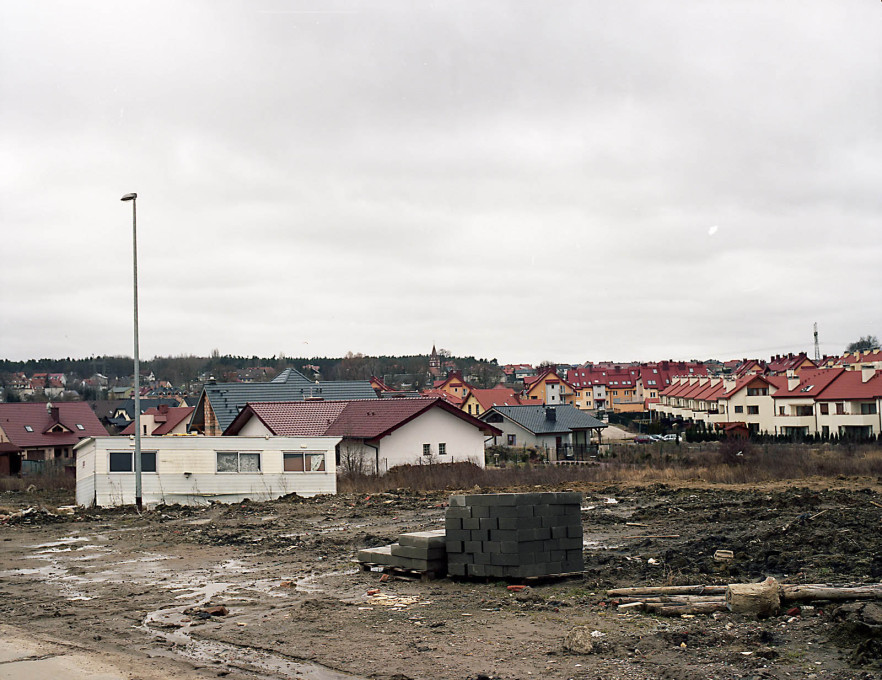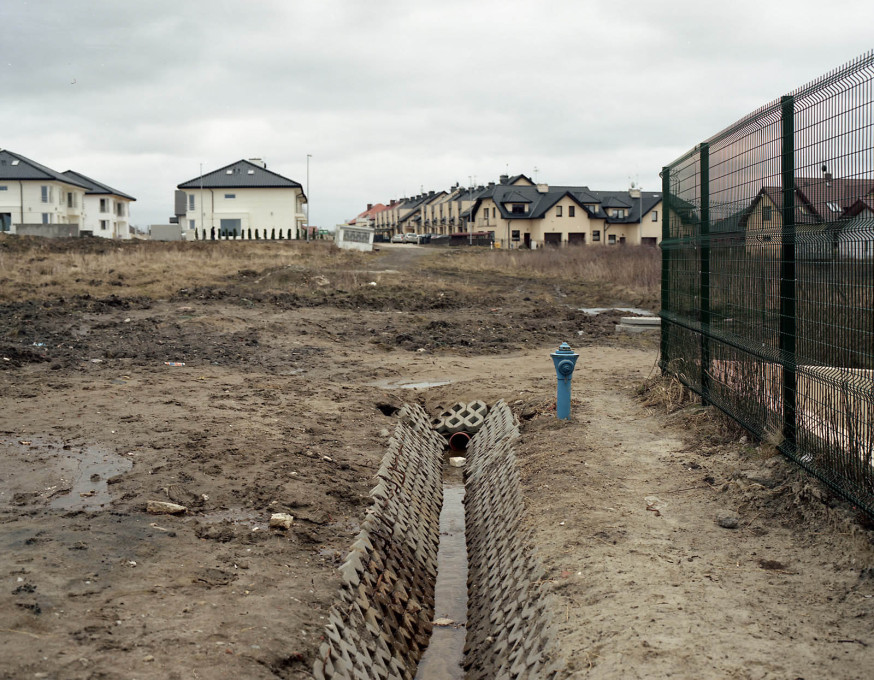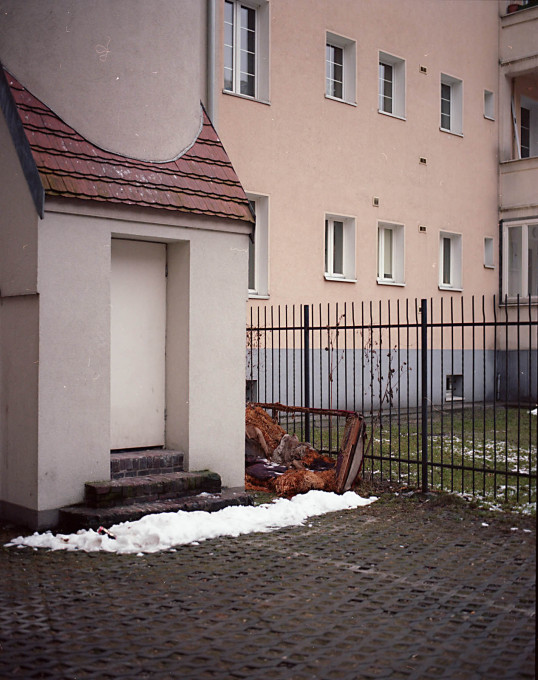Public space in Poland is often a bit of an overlooked terrain it seems – even for those who live there. During communism it was state-run and tainted, something to be shut outside. Today it is something for which many people do not feel responsible, leaving it to lie unkempt and unregarded, or to be gradually privatised between anonymous new developments. However, this public space has not been overlooked by photojournalist and writer Filip Springer, who here introduces his powerful series of images of the streets, playing fields, parking lots and in-between zones of Polish cities.
Over the 50 years of communism in Poland, there was no such thing as public space. Poles shut themselves in their homes because everything outside belonged to the oppressive state. It was not their property and so they did not look after it. The explosion of freedom in 1989 did not change much – there are still few people who care for public space. In a 2008 survey, Poles were asked who, in their opinion, should be responsible for the aesthetics of their surroundings. Over 47 percent of respondents answered that it should be the local authorities of any given location; nearly 24 percent believed that it was the task of architects and town planners; barely 12 percent thought the responsibility should be that of homeowners or the residents of apartment complexes and housing estates. Among the remaining answers, two catch the eye: a ministry specially set up for it! (almost 6 percent); and the government and prime minister (over 1.5 percent). In another survey in 2013, 67 percent of Poles also said they believed that there is too much advertising in Polish towns, yet at the same time 77 percent declared that they would have an advertisement on their home if they were paid to do so.
Not surprisingly the result is that there is less and less public space in Poland. Courtyards and spaces, which were until recently public, have become shopping malls, while ever more parks and green squares are being destroyed and lost under new housing developments.
– Filip Springer is a photojournalist and reportage writer, based in Warsaw, Poland. Springer currently works with the Reportage Institute in Warsaw.




